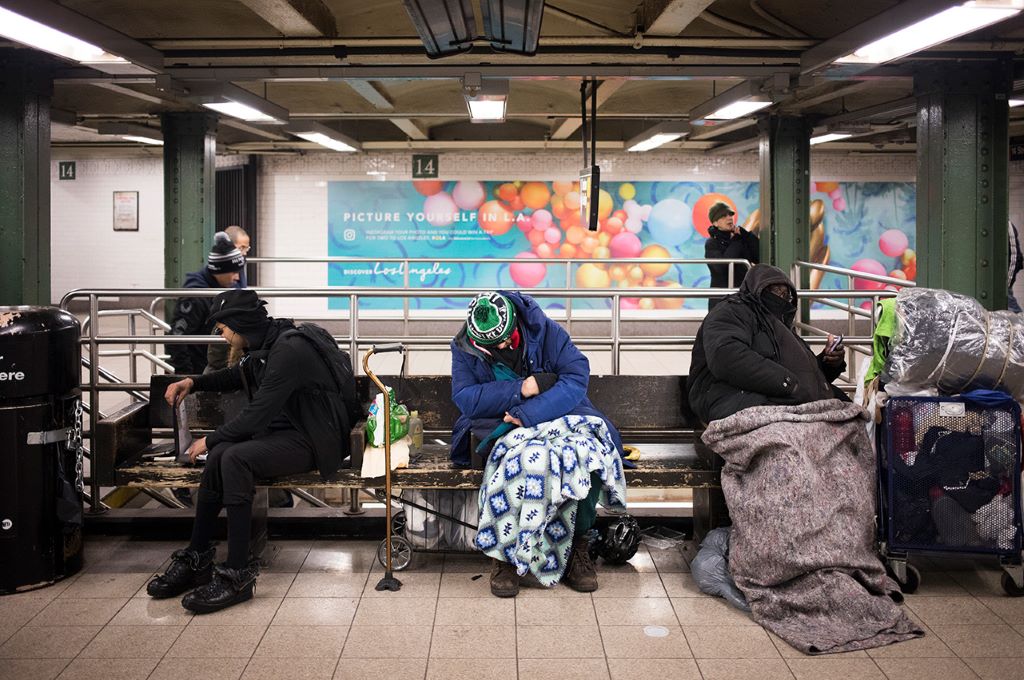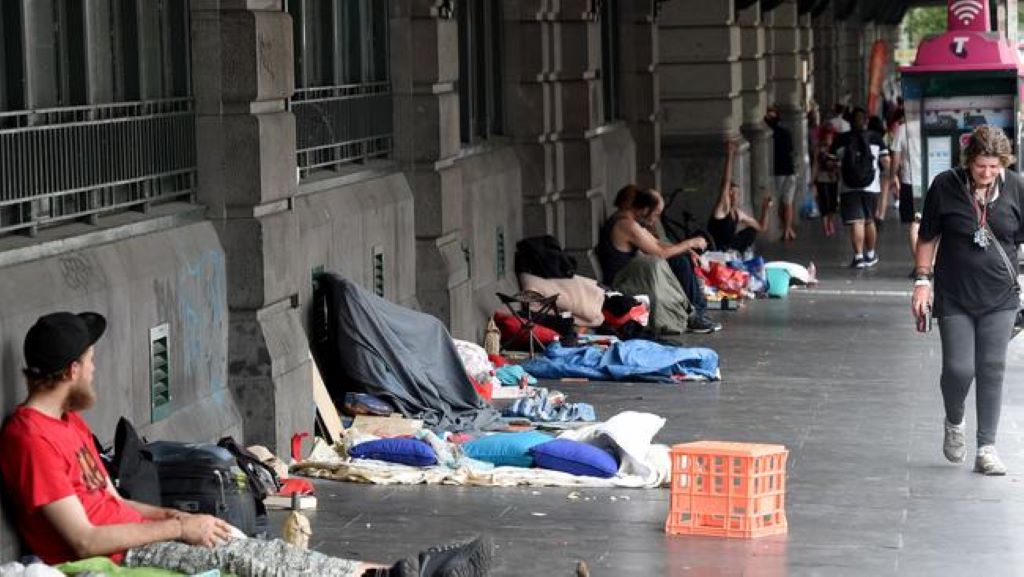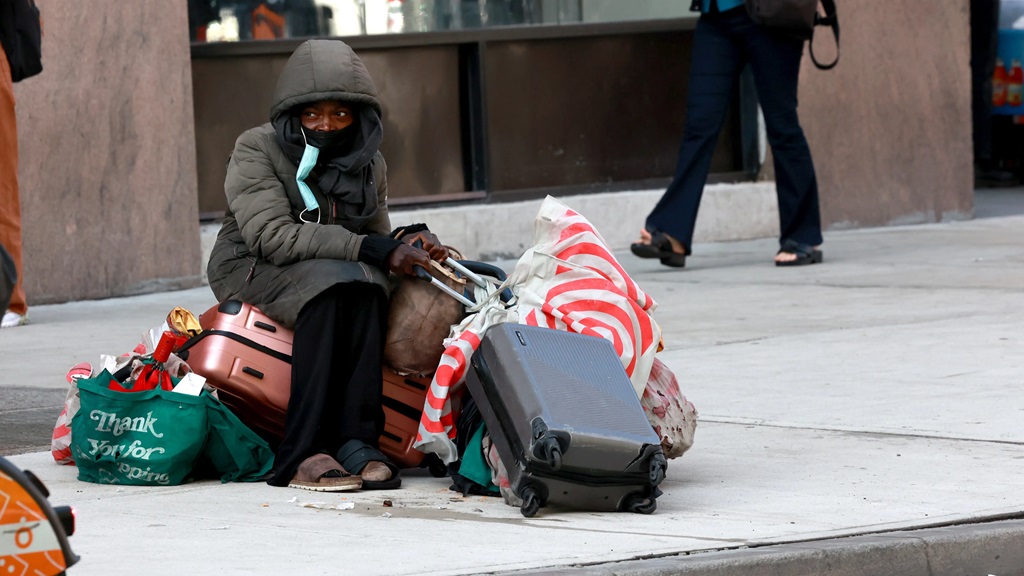The safest cities for homeless individuals include Seattle, Portland, San Francisco, and Honolulu. These cities strive to provide safe and secure environments for those experiencing homelessness, with various support services and resources available.
Despite the challenges faced by this vulnerable population, these cities have implemented initiatives to address their needs and ensure their safety. From providing access to shelters and affordable housing to delivering social services, these cities prioritize the well-being and security of their homeless residents.
By offering assistance and creating safe spaces, these cities are actively working towards reducing homelessness and improving the lives of those in need.
Challenges Faced By Homeless Individuals

Homelessness is a complex issue that affects millions of individuals around the world. For those without secure housing, everyday life can be filled with countless challenges and struggles. In this section, we will explore two significant challenges faced by homeless individuals: the lack of secure housing and safety concerns on the streets.
Lack Of Secure Housing
The lack of secure housing is a major obstacle that homeless individuals face daily. Without a safe and stable place to call home, their lives are constantly disrupted, making it difficult to maintain a sense of normalcy or establish a foundation for their future. This instability often leads to a multitude of other challenges, such as finding steady employment or accessing vital healthcare services.
Additionally, the lack of secure housing puts homeless individuals at a higher risk of mental health issues and substance abuse. With the constant stress of not knowing where they will sleep or find their next meal, it is no wonder that many turn to unhealthy coping mechanisms to survive. Addressing the root cause of homelessness by providing secure and affordable housing options is essential in breaking this cycle. Resources and information on such housing solutions can be found on websites like https://ngcatravel.com/, which offer insights and guidance for those seeking to help homeless individuals find stability and improve their life circumstances.
Safety Concerns On The Streets
The streets can be a dangerous place for homeless individuals, with safety concerns being a top priority. Living without a permanent roof over their heads exposes them to various risks, including violence, theft, and exploitation. Homeless individuals are often vulnerable targets for criminals, making them easy prey.
In addition to personal safety, homeless individuals also face health risks while living on the streets. Exposure to extreme weather conditions, lack of access to clean water and sanitation, and limited healthcare services greatly impact their overall well-being. Illnesses and infections are more prevalent among the homeless population, and without proper medical attention, these conditions can quickly escalate and become life-threatening.
Furthermore, the constant fear and stress of navigating through unsafe environments can take a severe toll on the mental and emotional health of homeless individuals. The lack of privacy and personal space, coupled with the ever-present threat of violence, creates a constant state of hypervigilance, further exacerbating their already challenging circumstances. This situation underscores the importance of identifying the best cities for homeless individuals, where support systems and safer environments are more readily available. In such cities, homeless individuals have a better chance of finding the stability and care they need to improve their overall well-being.
Understanding The Need For Safe Cities
Homelessness is a complex issue that affects countless individuals and families around the world. The search for safe and secure living conditions is an ongoing struggle for those without a home, and it is crucial to address this need. Safe cities play a vital role in providing a supportive environment for homeless individuals. By understanding the need for safe cities, we can recognize the positive impact they have on the well-being and access to support services for those experiencing homelessness.
Impact Of Safe Environments On Well-being
Safe environments significantly contribute to the well-being of homeless individuals. When people have a secure place to sleep and call home, they experience a sense of stability that positively impacts their mental health. Knowing that they can find safety in the city’s streets reduces stress and enhances their overall well-being.
The absence of violence and crime in safe cities fosters a greater feeling of security for homeless individuals. They can walk, explore, and connect with others without constantly worrying about their safety. This sense of security allows them to focus on rebuilding their lives and seeking opportunities for self-improvement and growth.
Moreover, safe cities provide a conducive environment for physical health. Access to clean water, sanitation facilities, and healthcare services becomes more attainable. Homeless individuals can address their health concerns with ease, leading to improved physical well-being as they can receive proper medical care and support.
Access To Support Services
In safe cities, homeless individuals can access a plethora of support services that are crucial in helping them break free from the cycle of homelessness. These cities often offer temporary shelters and emergency housing initiatives, creating opportunities for homeless individuals to have a secure and consistent place to stay.
Various organizations and non-profits working within safe cities provide essential support services, including counseling, healthcare, job training, and assistance with finding stable housing. These services are designed to empower homeless individuals, equipping them with the tools they need to rebuild their lives and transition toward long-term stability.
Safe cities also offer a supportive community network. Volunteers, advocates, and social workers are readily available to guide and offer their assistance. This interconnected network fosters a sense of belonging and provides homeless individuals with emotional support, reducing their feelings of isolation and despair.
Factors That Make A City Safe For Homeless Individuals
Creating safe cities for homeless individuals involves accessible shelters, affordable housing, and comprehensive support services. These factors, alongside community engagement and collaboration, contribute to a city’s safety for the homeless. Additionally, policies that prioritize housing stability and address underlying social issues play a crucial role in ensuring the well-being of homeless individuals in urban areas.
Factors That Make a City Safe for Homeless Individuals When it comes to ensuring the safety and well-being of homeless individuals, certain factors play a crucial role. A city that prioritizes the Availability of Affordable Housing and offers Community Support and Outreach Programs can significantly impact the safety and security of its homeless population.
Availability Of Affordable Housing
In a city with affordable housing options, homeless individuals have the opportunity to secure stable and safe living conditions. The presence of emergency shelters, transitional housing, and supportive housing programs can provide a sense of security and stability, reducing the risk of exposure to dangers on the streets.
Community Support And Outreach Programs
Community support and outreach programs are essential for providing homeless individuals with access to vital resources and services. This includes mental health support, substance abuse treatment, job training, and educational opportunities. When these programs are readily available, homeless individuals can receive the assistance they need to improve their circumstances and reintegrate into the community. By prioritizing the Availability of Affordable Housing and fostering Community Support and Outreach Programs, cities can create safer environments for homeless individuals, offering them a chance to rebuild their lives and thrive.
Examining The Safest Cities For Homeless
Discover the top cities offering safety and support for the homeless population. Uncover the areas where individuals can find security and assistance on their journey to stability and a better future.
When it comes to addressing the needs of the homeless population, finding safe and secure environments is crucial for their well-being. In this blog post, we will delve into the topic of the safest cities for the homeless, looking at how various cities in the United States have prioritized the safety of this vulnerable community. Through an analysis of ranking criteria, success stories, and case studies, we aim to shed light on the initiatives and efforts undertaken by these cities to provide secure environments for the homeless population.
Safe Cities Ranking Criteria
Ranking the safest cities for the homeless requires comprehensive criteria that evaluate various factors contributing to safety and security. To determine these rankings, cities are assessed based on several key considerations:
- Crime Rate: Evaluating the overall crime rate and specifically crimes that disproportionately affect the homeless community such as assault, theft, and harassment.
- Supportive Services: The availability and accessibility of support services such as shelters, food programs, and healthcare facilities.
- Police Engagement: The level of engagement and collaboration between local law enforcement agencies and homeless individuals, promoting trust and safety.
- Community Resources: Assessing the presence of community organizations, NGOs, and volunteer efforts dedicated to assisting the homeless population.
These criteria provide a holistic approach to evaluating the safety of cities for the homeless, ensuring that multiple aspects are considered in the rankings.
Success Stories And Case Studies
Examining success stories and case studies from cities that have made significant strides in providing safe environments for the homeless can offer valuable insights and inspiration. Here are a few examples:
- New York City: Through the implementation of the “Safe Haven” initiative, which offers temporary housing and supportive services, NYC has successfully reduced street homelessness by 80% in targeted areas.
- Seattle: By adopting a “Housing First” approach, Seattle has prioritized providing stable housing to homeless individuals, resulting in a significant decrease in the number of unsheltered people on the streets.
- Austin: The “Community First! Village” in Austin has created a community-oriented approach to housing the homeless, providing affordable and sustainable housing options along with various support services.
These success stories highlight the positive impact that strategic initiatives and dedicated efforts can have on creating safer environments for the homeless population.
Building Secure Communities For The Homeless

Advocacy And Policy Initiatives
Advocacy and policy initiatives play a crucial role in building secure communities for the homeless. By advocating for the rights and needs of the homeless population, society can work towards implementing effective policies that provide essential support and protection. One such initiative is the establishment of safe zones or designated areas where the homeless can find temporary shelter, access to basic amenities, and social services.
These advocacy efforts are focused on addressing the root causes of homelessness, such as affordable housing, mental health, and substance abuse support. By working closely with local government officials and community organizations, advocacy groups can push for policies that allocate more resources to homelessness prevention programs and affordable housing initiatives. This proactive approach not only helps in ensuring the safety of the homeless but also in addressing the underlying issues that contribute to their vulnerability.
Collaboration Between Agencies And Stakeholders
Collaboration between diverse agencies and stakeholders is key to building secure communities for the homeless. This collaborative effort involves bringing together different organizations, including government agencies, non-profit groups, healthcare providers, and law enforcement, to address the multifaceted challenges faced by the homeless.
Through joint planning and coordination, these agencies can establish comprehensive outreach programs that provide essential services, including medical care, mental health support, job training, and substance abuse counseling, to the homeless population. By sharing resources, expertise, and data, this collaborative approach maximizes the impact and efficiency of the services provided.
Furthermore, this collaboration ensures a seamless transition between agencies and a holistic approach to homelessness. By working together, agencies can identify gaps in existing services and develop innovative solutions to address them. Additionally, this collaboration promotes the exchange of best practices and knowledge-sharing, ultimately leading to more effective strategies and programs.
Frequently Asked Questions On Safest Cities For Homeless
Which Cities Have The Lowest Crime Rates For Homeless Individuals?
Cities like Boise, Idaho; Provo, Utah; and Austin, Texas have low crime rates for homeless individuals. These cities offer safe shelters, outreach programs, and supportive services for the homeless population.
What Measures Do These Cities Take To Ensure The Safety Of Homeless Individuals?
Cities with low crime rates for the homeless implement various measures. They have dedicated police teams, community outreach programs, safe shelter facilities, mental health services, and employment support to ensure the safety and well-being of homeless individuals.
Are There Any Resources Available For Homeless Individuals In These Cities?
Yes, these cities prioritize providing resources and support to homeless individuals. They have organizations, government-funded programs, and private initiatives that offer food, shelter, clothing, healthcare, job training, and other resources to help homeless individuals regain stability.
How Do These Cities Address The Specific Needs Of Homeless Women?
Cities with a focus on homeless individuals also address the specific needs of women. They provide women-only shelters, hygiene products, reproductive healthcare services, support for survivors of domestic violence, and employment assistance tailored to meet the unique challenges faced by homeless women.
Conclusion
The safety and well-being of homeless individuals are paramount. Raising awareness and creating actionable strategies to empower women against abuse in society is essential; similarly, identifying the safest cities for the homeless can provide vital resources and support. Communities must work towards ensuring security and assistance for those in need. By prioritizing safety, we can create more inclusive and supportive environments for all, fostering a culture of respect and protection for vulnerable populations.





